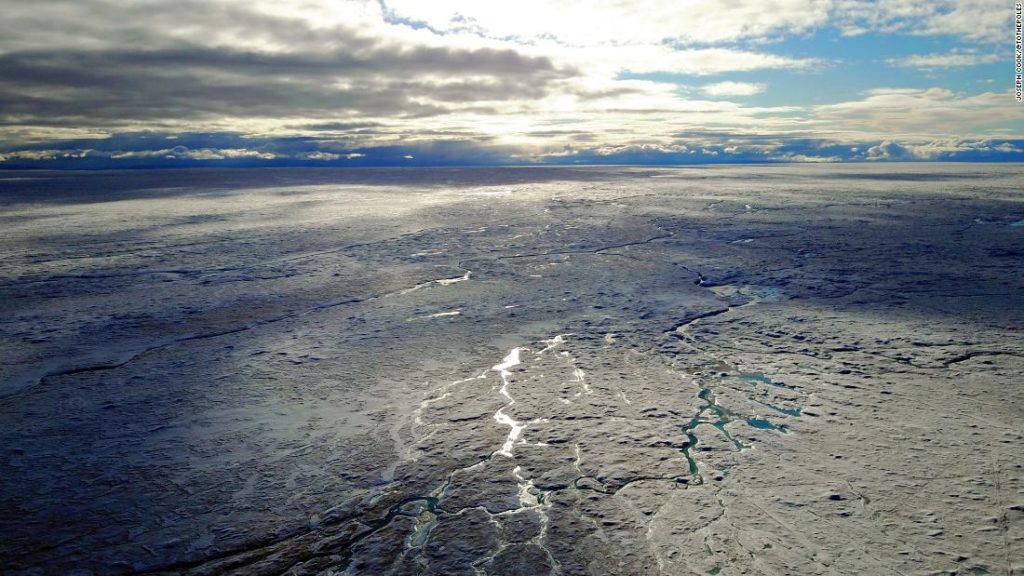“Until recently people have thought of glaciers and ice sheets … as being relatively lifeless places,” says Cook, a British glaciologist. “But when you look under a microscope, the Greenland ice sheet in particular, and other glaciers, reveal themselves to be a frozen rainforest of biodiversity.”
The rainbow hues Cook encountered are created by an array of tiny life forms that thrive on the surface of the ice sheet.
Biodiversity is usually considered a good thing, but in this case the profusion of microbial life is speeding up ice melt, and likely causing global sea levels to rise faster than scientists have predicted.
Cook says the microscopic life forms he studies are contributing to the problem.
One of these organisms is an algae that grows in the thin layer of water on the surface of the ice. It produces a purple-brown pigment which acts “like a natural sunscreen,” says Cook, protecting the algae from the full force of the Arctic sunlight. The pigment also causes the ice to heat up and melt.
“If you go out on a hot day wearing a black t-shirt, you get warmer than if you go out on a hot day wearing a white t-shirt. The same thing happens on the ice,” says Cook. “These algae, like the black t-shirt for the glacier, are causing it to warm up in the sun and melt faster.”
“Vicious feedback cycle”
Glacier algae are not a new phenomenon — there are records of them in the diaries of polar explorers from the 1870s, says Cook. What has changed is global warming. With higher temperatures and reduced snow fall, a greater surface area of ice is exposed, allowing the algae to flourish.
The spreading algae boosts ice melt, releasing more water and nutrients held in the ice, which in turn promotes algae growth — a process Cook describes as a “vicious feedback cycle.”
“That process creates an ecosystem, a niche on the ice surface that wouldn’t otherwise exist,” says Cook. The melt holes catch more dust, creating more cryoconite, which leads to more ice melt.
Mounting evidence of rapid ice melt
Previous estimates of sea level rise may have been too low partly because of a lack of information about the role of ice-loving microbes, says Cook.
“If we want to make good decisions about how to manage our land, our infrastructure … and our economy into the future, we have to have good projections of sea level rise and the associated risks in that same time span,” Cook says.
What’s becoming clear is that ice sheets are surprisingly dynamic and complex environments. “There are so many questions to answer,” says Cook. “It’s kind of like a theme park for a scientist because there’s just so much to do.”
You may also like
-
UK coronavirus variant has been reported in 86 countries, WHO says
-
NASA technology can help save whale sharks says Australian marine biologist and ECOCEAN founder, Brad Norman
-
California Twentynine Palms: Explosives are missing from the nation’s largest Marine Corps base and an investigation is underway
-
Trump unhappy with his impeachment attorney’s performance, sources say
-
Lunar New Year 2021: Ushering in the Year of the Ox

